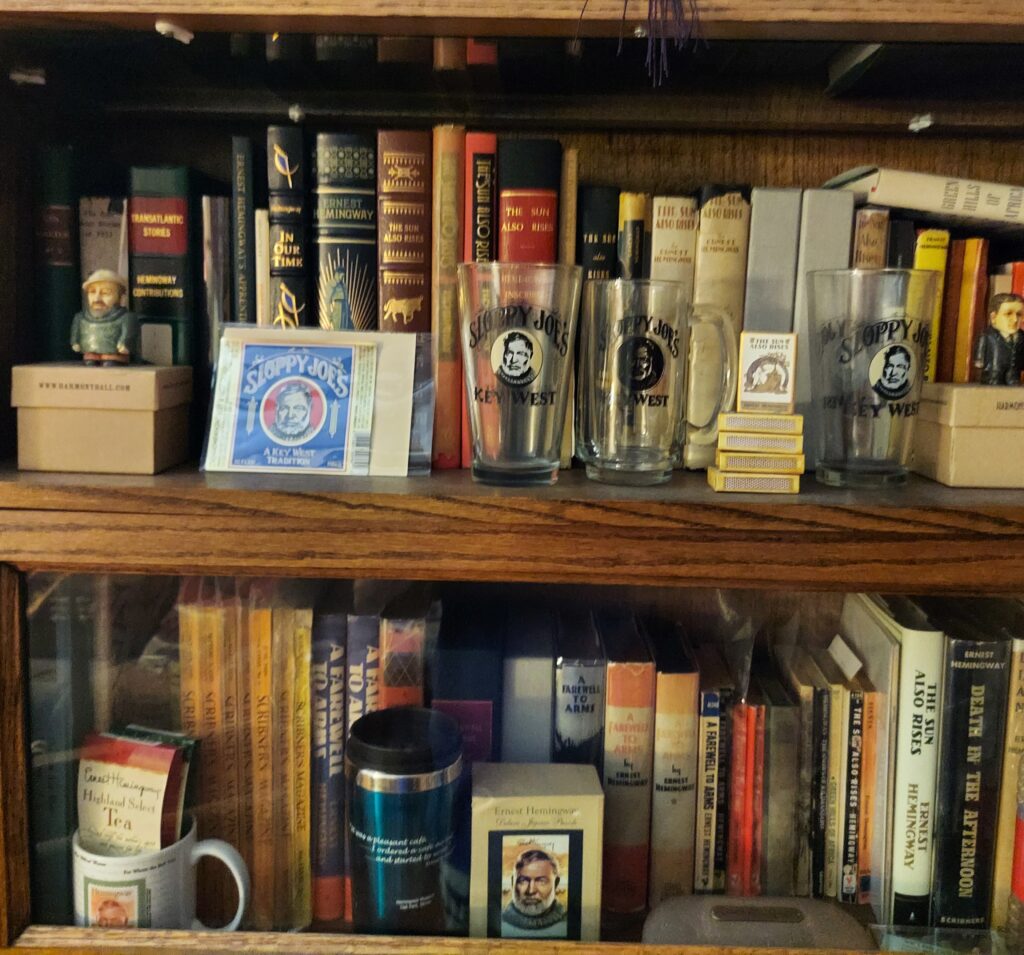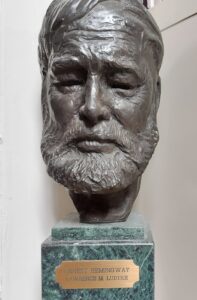Happy Birthday Hemingway: A Dozen Things to Know about Young Ernest Hemingway

July 21st, 2023, marks the 124th anniversary of the birth of Nobel- and Pulitzer Prize-winning author Ernest Hemingway, whose image is perhaps the most widely recognized of any 20th-century writer. His career began in the 1920s while he was living on Paris, where his early short stories earned him respect as an innovative stylist. His breakthrough novel was The Sun Also Rises, which was preceded in publication by In Our Time, a collection of short stories, and the satirical novel The Torrents of Spring. The Sun Also Rises follows a Hemingwayesque character, Jake Barnes, and his friends on an alcohol-steeped foray to Pamplona, Spain, for an annual festival that featured bullfights. The 1926 novel was based on a 1925 alcohol-steeped jaunt that Hemingway and his friends took to the festival (one participant said that Hemingway recorded the entire trip as it had happened and merely changed the names of the characters). Publication of the novel launched Hemingway into an international orbit, the start of a career that, 62 years after his death in 1961, still (please forgive the extended metaphor) rockets along.
This list highlights 12 events from his life before he achieved fame, laid claim to various prizes, and accumulated a troubling array of personal problems in his final years.
- Ernest Hemingway’s mother, Grace Hemingway, was an aspiring opera singer who, at age 23, left her home in Illinois to embark on an operatic career in New York City in 1895. This attempt may sound quixotic, but no—she won critical praise after her debut at Madison Square Garden as a member of the Arts Students’ League. Her weak eyes suffered in the glare of stage lights, however, and she returned to the Chicago suburbs. There she married Clarence Hemingway, a young doctor who had attended to Grace’s mother when the elder woman was dying of cancer.
- Ernest Hemingway, weight 9 pounds and 8 ounces, was born in the home of his maternal grandfather, Ernest Hall, in Oak Park, Illinois, a few miles west of Chicago. Ernest Hall had served in the Union cavalry during the Civil War. The home is now open to the public.
- While Ernest was a baby, Grace dressed him and his elder sister alike and passed them off as twins. She even held his sister back a year in school so the siblings could be in the same class and continue the illusion.
- Grace did not desert her love of music: she taught music lessons to local children and had Ernest learn to play the cello. She could devote time to such activities because the Hemingway household included as many as six servants, among then a cook. The large house in which they lived still stands, just down the street from the Hemingway Birthplace Museum, but it is not open to the public.
- Grace more or less dominated Hemingway’s father, something Ernest resented. His assessment of their marriage is hinted at in the Nick Adams short stories, a series featuring a character very much like Ernest. In later life, Ernest called her a bitch, though he continued to supply occasional financial support. One can imagine he had a hard time choosing Mother’s Day cards.
- Hemingway attended Oak Park High School. He wrote for the school newspaper, the Gazette, and wrote short stories for the school’s literary magazine, The Tabula. This apprentice work seems to show the influence of Jack London, including stories about dogs and bear traps and hunting and taking place in the rugged northern part of Michigan around the town of Petosky and nearby Thornton Bay, where the Hemingways had a summer retreat.
- Ernest tried to enlist in the military during World War I but was rejected because he was nearsighted. So he enlisted in the Red Cross as an ambulance driver and soon found himself with the Italian army on the front with Austria. However, he was not issued weapons or put behind the wheel of an ambulance. Instead, he was loaded down with such commodities as cigarettes and candy and sent to hand out Hershey bars to troops at the front.
- Handing out chocolates did not mean that Hemingway was not in danger. While distributing goods, he was hit by machine gun fire and perforated with more than 200 bits of metal shrapnel from a mortar shell. Various stories tell how Hemingway carried a wounded Italian soldier to a medic station or how he was carried on a stretcher, but the accuracy of the details remains unsettled. In any event, Hemingway had been badly wounded and suffered through multiple surgeries to remove shrapnel from his legs. Only 18, he endured a slow and painful recovery at a hospital in Milan. The Italian government gave him a medal of valor.
- After his wounding, Hemingway for many months could not sleep without a light on, fearing that if he fell asleep in the dark, his soul would leave his body. Today he probably would have received treatment for post-traumatic-stress disorder.

A bronze of the mature and troubled Hemingway by noted sculptor Lawrence M. Ludtke. - While recovering, he met an American Red Cross nurse, Agnes von Kurowski, who was about 7 years his senior. He fell in love with her, and she agreed to marry him. However, after he was sent home to complete his recovery, she sent him a letter breaking off the engagement. He subsequently wrote “A Very Short Story” in which a nurse breaks her engagement with a soldier who has returned to America, and he subsequently contracts gonorrhea from a sales girl in a taxi cab. Hemingway’s novel A Farewell to Arms borrows heavily from his affair with Agnes.
- Back in Chicago, Hemingway gave speeches about his overseas experience to local organizations, wearing his Italian uniform, replete with high leather boots and a dashing black velvet cape with red satin lining. While in the hospital in Milan, Ernest had begun to drink heavily from bottles of alcohol smuggled in by friends. His persistence in drinking heavily at home and in remaining unemployed caused tension with his mother, who felt mistreated by Ernest and eventually threw him out of the house.
- In 1921 he married Hadley Richardson of St. Louis, whom he’d met in Chicago through mutual friends, and they moved to Paris, France. There he became a highly successful author and lived a long and happy life. Or perhaps not—but isn’t it pretty to think so.
For more information on these 12 points and on the larger shadow of Ernest Hemingway’s life, take a look at:
Michael Reynolds, 1986. The Young Hemingway. W.W. Norton & Company, New York and London.
Peter Griffin, 1985. Along with youth: Hemingway The Early Years. Oxford University Press, New York and Oxford.
Kenneth S. Lynn, 1987. Hemingway. Fawcett Columbine, New York.
Denis Brian, 1988. The True Gen: An Intimate Portrait of Hemingway by Those Who Knew Him Well. Grove Press, New York.
Books are being written about Ernest Hemingway relentlessly, so you can find newer biographies, but those listed above are among my favorites and have stood the test of time.
See also: